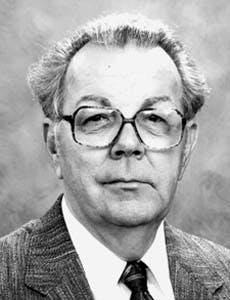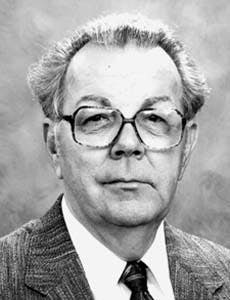Edward J. Swain
Consultant
Houston
U.S. methanol producers averaged a utilization factor of only 68% during 1994.
The production difficulties that contributed to this poor performance, along with rising demand, pushed contract methanol prices to record levels in December 1994.
Additional capacity and improved operations should cause contract methanol prices to stabilize at about 55-60/gal as the supply/demand balance improves.
Production
U.S. methanol production has increased 116% in the last 10 years (Fig. 1)(82344 bytes). Even at this increased production rate, however, supplies satisfied only 75% of demand in 1994.
The production of three chemicals accounts for 72% of U.S. methanol use:
- Methyl tertiary butyl ether (MTBE), 38%
- Formaldehyde, 24%
- Acetic acid, 10%.
During 1994, 17 U.S. plants produced methanol. These plants, and their 1994 capacities, are listed in Table 1.(31378 bytes)
Total nameplate capacity of these 17 plants is reported to be 7.187 million metric tons/year (mty). U.S. methanol production in 1994 totaled only 4.903 million mty, however, which means operating rates were only about 68%.
A number of factors contributed to low operating rates in 1994:
- Ashland Chemical Co.'s Plaquemine, La., plant was down for several weeks in early June for a maintenance turnaround.
- An explosion at Enron Corp.'s methanol plant in Pasadena, Tex., damaged a nearby plant owned by Aristech Chemical Corp. Aristech filed suit against Enron, which delayed reopening of Enron's plant until second quarter 1995.
- Fortier Methanol Co.'s new methanol plant at Fortier, La., started up in September, thus reducing the calculated annual average operating rate, which is based on year-end capacity.
- Georgia Gulf Corp.'s Plaquemine, La., plant experienced operational problems during the second half of 1994, including several weeks' downtime for a maintenance turnaround.
- Hoechst Celanese Corp.'s Bishop, Tex., plant took a 4-week turnaround during February, but delays postponed start-up until mid-March.
- Lyondell Petrochemical Co.'s Channelview, Tex., plant was down for several weeks in August for a maintenance turnaround.
- Quantum Chemical Corp. is in the process of debottlenecking its Deer Park, Tex., plant to return it to operation at nameplate capacity.
- A broken compressor at Texaco Chemical Co.'s Delaware City, Del., plant resulted in 4 weeks of downtime in late March and early April.
- Terra Industries' Woodward, Okla., plant was not completed until April.
Increasing the average on-stream factor of these plants to 85% would produce an additional 1.22 million mty of methanol. This amount is equivalent to more than 50% of U.S. methanol imports in 1994.
Construction
Four new methanol plants are scheduled for start-up between now and early 1997:
- Valero Energy Corp. and Hoechst Celanese are renovating an idle 600,000 mty plant at Clear Lake, Tex. Start-up is scheduled for October 1995. Each partner will receive 50% of output.
- Sterling Chemicals Inc. and BP Chemicals are building a 449,000 mty plant at Sterling's Texas City, Tex., site. Start-up is scheduled for June 1996. More than one third of the methanol produced will be used on site in Sterling's acetic acid plant. BP will use its share of production to sell on the open market or to swap with other companies to ensure methanol supplies for its acetic acid plants in the U.S. and South Korea.
- Eastman Chemical Co. and Air Products & Chemicals Inc. will build a 28 million gal/year (about 84,000 mty) plant at Kingsport, Tenn. The plant will use coal as feedstock to produce methanol via Air Products' liquid-phase methanol technology. Start-up is planned for fourth quarter 1996. Eastman will use the majority of production to manufacture acetic anhydride and dimethyl terephthalate.
- Methanol One of Alabama Inc., a new company, plans to build a 660,000 mty plant at Degussa Corp.'s site at Theodore, Ala. The plant is scheduled to start up in first quarter 1997.
Imports
In 1994, imports of methanol into the U.S. totaled 761.6 million gal, or 2.28 million metric tons. The average import price was 64/gal.
Monthly imports peaked in December at 122.8 million gal, at an average price of 70/gal, after increasing from a low of 36.5 million gal in March.
Five countries accounted for 93% of methanol imports during 1994:
- Canada, 388.1 million gal
- Trinidad, 155.5 million gal
- Venezuela, 85.7 million gal
- Chile, 43.8 million gal
- Bahrain, 32.8 million gal.
Imports from 14 other countries comprised the remaining 55.7 million gal of methanol imported to the U.S. during 1994.
Import prices ranged from a low of 50/gal from Canada, to a high of 87/gal from Bahrain.
Exports
U.S. methanol exports totaled 37.65 million gal during 1994, at an average price of 75/gal. Seven countries, out of a total of 55 export destinations, accounted for 90% of the U.S. export quantity:
- Mexico, 18.98 million gal
- Brazil, 6.59 million gal
- The Netherlands, 2.80 million gal
- Ecuador, 1.74 million gal
- Germany, 1.35 million gal
- Canada, 1.34 million gal
- Peru, 1.07 million gal.
Exports to Mexico may decline during 1997, when a new 275 million gal/year methanol plant is scheduled to start up.
Brazil has two small methanol plants with a total nameplate capacity of 63 million gal/year. But as new methanol plants come on stream in Chile and Trinidad in 1996, U.S. methanol exports to Brazil could decrease.
Methanol price
At the end of 1993, contract methanol prices were at 45/gal. This figure increased to about 55/gal during the first 4 months of 1994, then to 60-70/gal during the next 45 days.
By July, the contract price had jumped to 80/gal. Another price increase followed quickly, however, producing a $1.00/gal price in late July. And by the end of September, prices were $1.30/gal.
As the year closed, methanol prices reached $1.55/gal. This price was maintained during the first 10 weeks of 1995. Prices began to fall in mid-March, however, and by the end of May were back to 65/gal.
MTBE
MTBE is the leading oxygenate blended into U.S. reformulated and oxygenated gasolines.
U.S. MTBE production from 1985 to 1994 is shown in Table 2(20386 bytes). Table 3 (16423 bytes) lists U.S. capacities for production of various oxygenates.
Utilization rates at U.S. MTBE plants have been rather low for the past 5 years. In 1993, an on-stream factor of about 67% was recorded, and data from 1994 indicate a utilization rate of 63%.
Contract MTBE prices were about $1.05 at the beginning of 1994. Prices dropped to 98/gal during late May and early June, then increased back to $1.05/gal by early August.
In mid-September, contract prices increased to $1.20-1.24/gal. By the end of the year, prices had risen as high as $1.45/gal.
Some new MTBE projects have been put on hold until a number of related issues are resolved. These issues include:
- Reported health problems related to MTBE use
- Controversy over the best way to reduce emissions of volatile organic compounds from mobile sources
- EPA's continued efforts to ensure ethanol's share of the reformulated and oxygenated gasoline market.The U.S. Department of Energy reported that U.S. refiners blended the following quantities of oxygenates into gasoline at refinery sites during 1994:
- 145,000 b/cd MTBE
- 5,300 b/cd other oxygenates.
The API recently released its latest breakdown of the U.S. motor gasoline consumption by grade (Table 4)(12976 bytes). According to these figures, reformulated gasoline comprises 27% of the U.S. gasoline market and conventional gasoline, 64%.
There appears to be a continuing good market for MTBE as long as fuel-grade ethanol does not receive selective treatment from the U.S. Congress and the Environmental Protection Agency.
In 1995, U.S. refiners may receive some direction from Congress regarding which types of gasoline are needed and which oxygenates are to be used.
The Author
Swain also worked for UOP and Velsicol Chemical Corp. He has a BS degree in chemical engineering and an MS in business and engineering administration from Illinois Institute of Technology, Chicago.
Copyright 1995 Oil & Gas Journal. All Rights Reserved.



